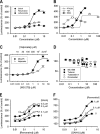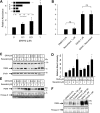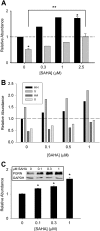Suberoylanilide hydroxamic acid (vorinostat) up-regulates progranulin transcription: rational therapeutic approach to frontotemporal dementia
- PMID: 21454553
- PMCID: PMC3091219
- DOI: 10.1074/jbc.M110.193433
Suberoylanilide hydroxamic acid (vorinostat) up-regulates progranulin transcription: rational therapeutic approach to frontotemporal dementia
Abstract
Progranulin (GRN) haploinsufficiency is a frequent cause of familial frontotemporal dementia, a currently untreatable progressive neurodegenerative disease. By chemical library screening, we identified suberoylanilide hydroxamic acid (SAHA), a Food and Drug Administration-approved histone deacetylase inhibitor, as an enhancer of GRN expression. SAHA dose-dependently increased GRN mRNA and protein levels in cultured cells and restored near-normal GRN expression in haploinsufficient cells from human subjects. Although elevation of secreted progranulin levels through a post-transcriptional mechanism has recently been reported, this is, to the best of our knowledge, the first report of a small molecule enhancer of progranulin transcription. SAHA has demonstrated therapeutic potential in other neurodegenerative diseases and thus holds promise as a first generation drug for the prevention and treatment of frontotemporal dementia.
Figures





References
-
- van Swieten J. C., Heutink P. (2008) Lancet Neurol. 7, 965–974 - PubMed
-
- Cruts M., Gijselinck I., van der Zee J., Engelborghs S., Wils H., Pirici D., Rademakers R., Vandenberghe R., Dermaut B., Martin J. J., van Duijn C., Peeters K., Sciot R., Santens P., De Pooter T., Mattheijssens M., Van den Broeck M., Cuijt I., Vennekens K., De Deyn P. P., Kumar-Singh S., Van Broeckhoven C. (2006) Nature 442, 920–924 - PubMed
-
- Baker M., Mackenzie I. R., Pickering-Brown S. M., Gass J., Rademakers R., Lindholm C., Snowden J., Adamson J., Sadovnick A. D., Rollinson S., Cannon A., Dwosh E., Neary D., Melquist S., Richardson A., Dickson D., Berger Z., Eriksen J., Robinson T., Zehr C., Dickey C. A., Crook R., McGowan E., Mann D., Boeve B., Feldman H., Hutton M. (2006) Nature 442, 916–919 - PubMed
-
- Gass J., Cannon A., Mackenzie I. R., Boeve B., Baker M., Adamson J., Crook R., Melquist S., Kuntz K., Petersen R., Josephs K., Pickering-Brown S. M., Graff-Radford N., Uitti R., Dickson D., Wszolek Z., Gonzalez J., Beach T. G., Bigio E., Johnson N., Weintraub S., Mesulam M., White C. L., 3rd, Woodruff B., Caselli R., Hsiung G. Y., Feldman H., Knopman D., Hutton M., Rademakers R. (2006) Hum. Mol. Genet. 15, 2988–3001 - PubMed
Publication types
MeSH terms
Substances
Grants and funding
LinkOut - more resources
Full Text Sources
Other Literature Sources
Miscellaneous

